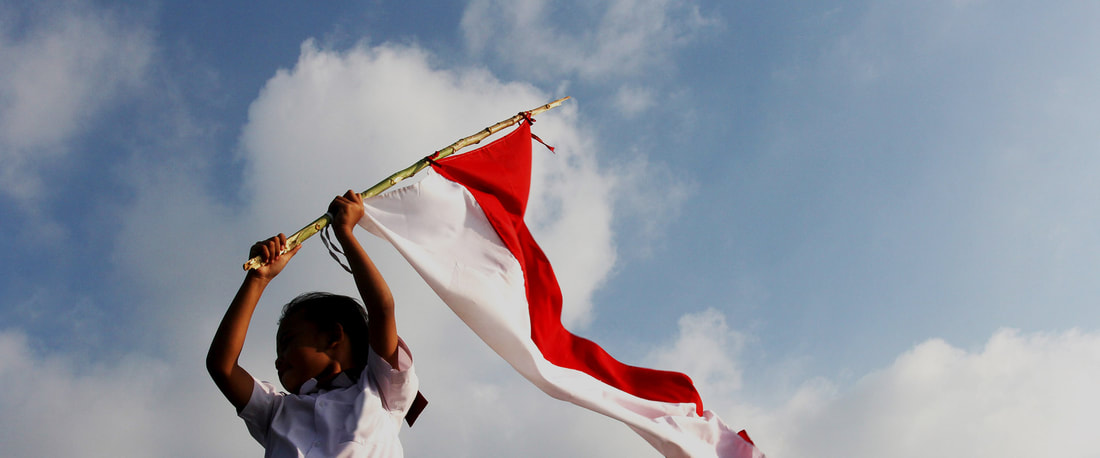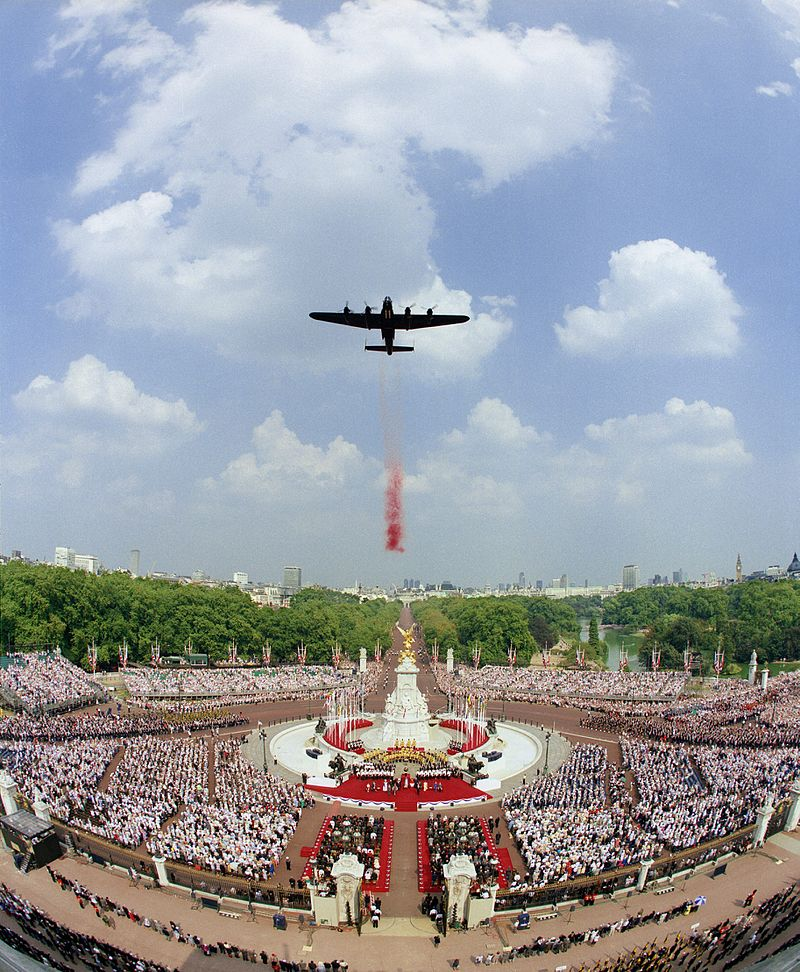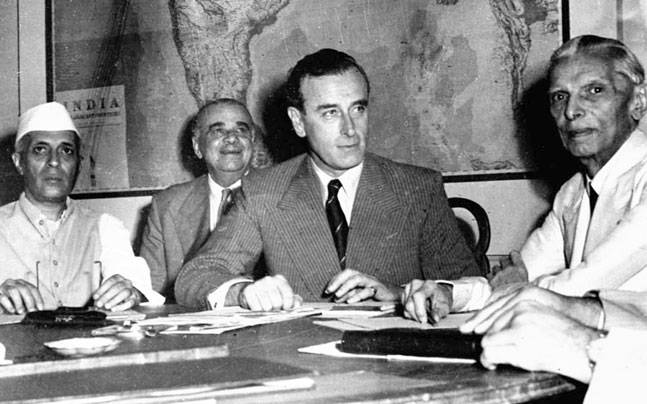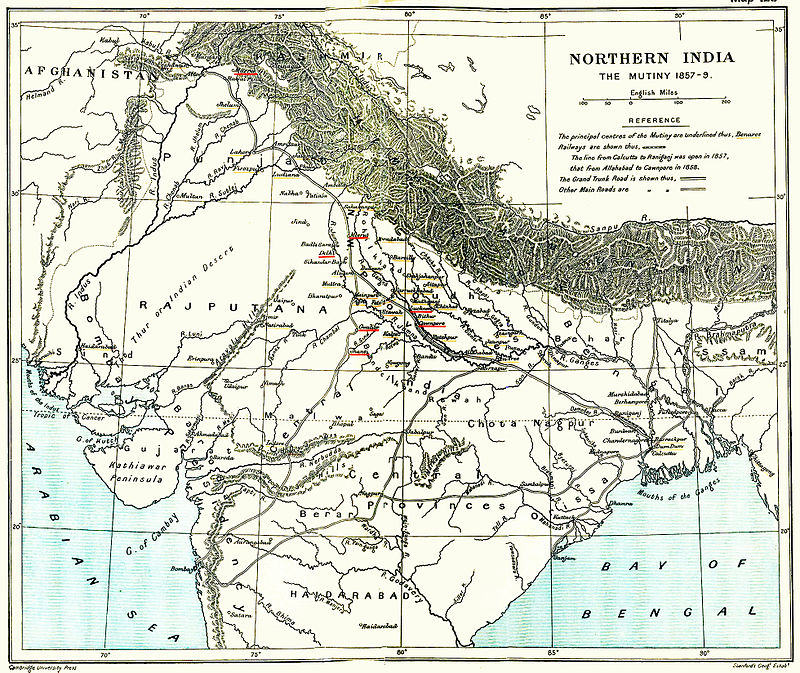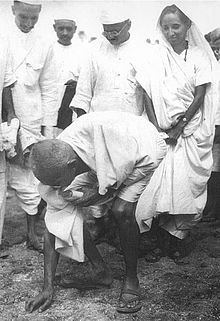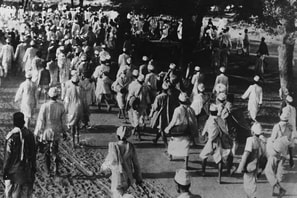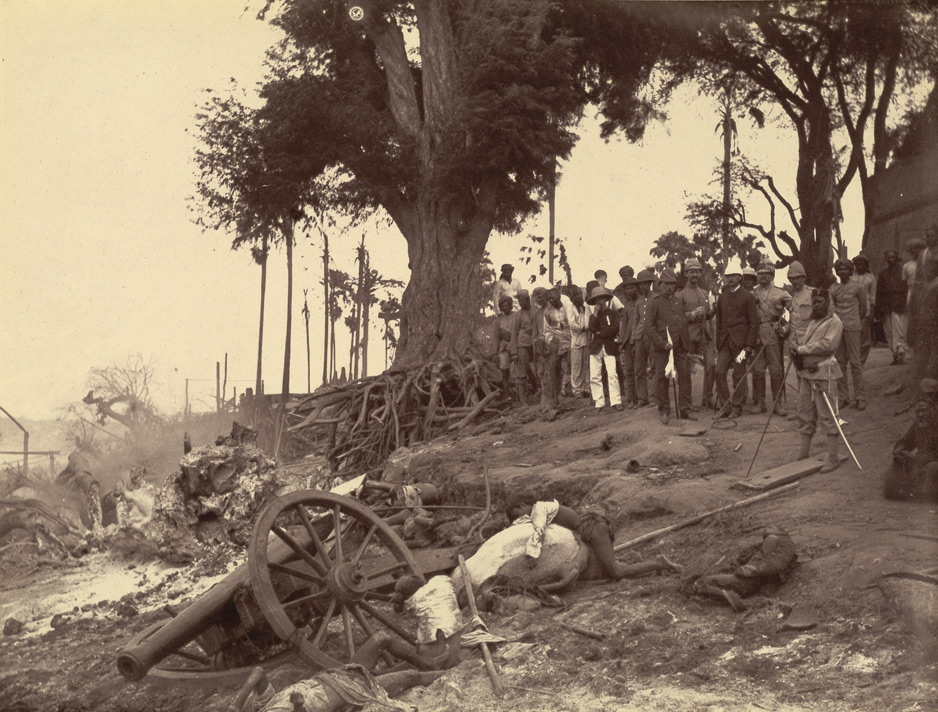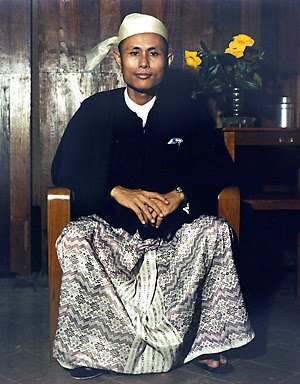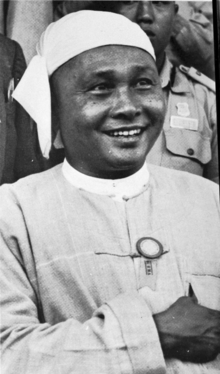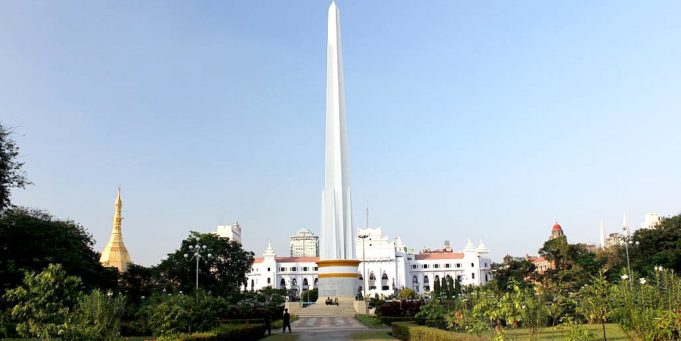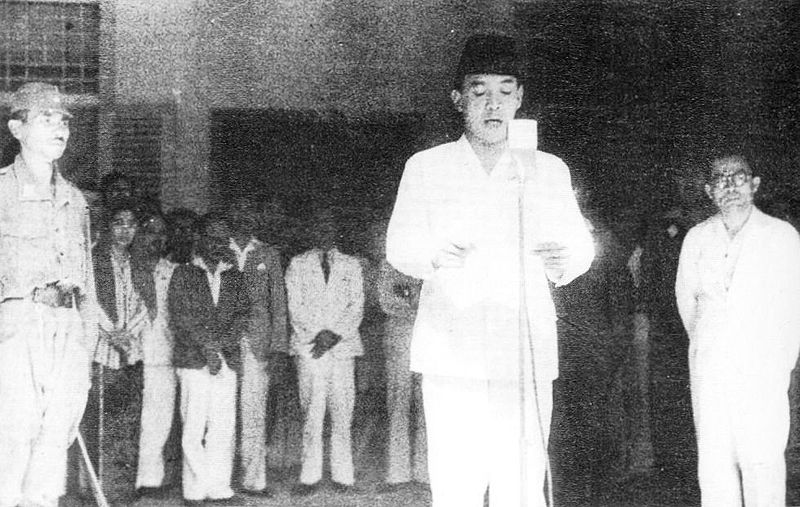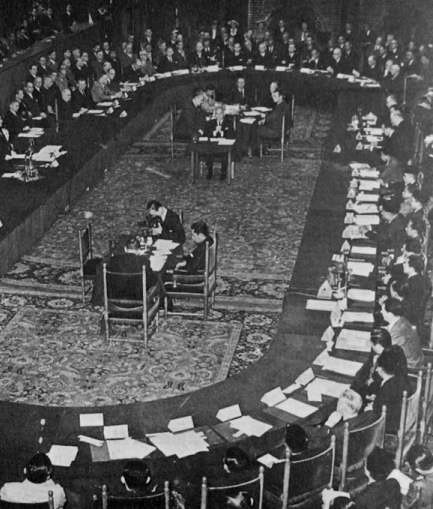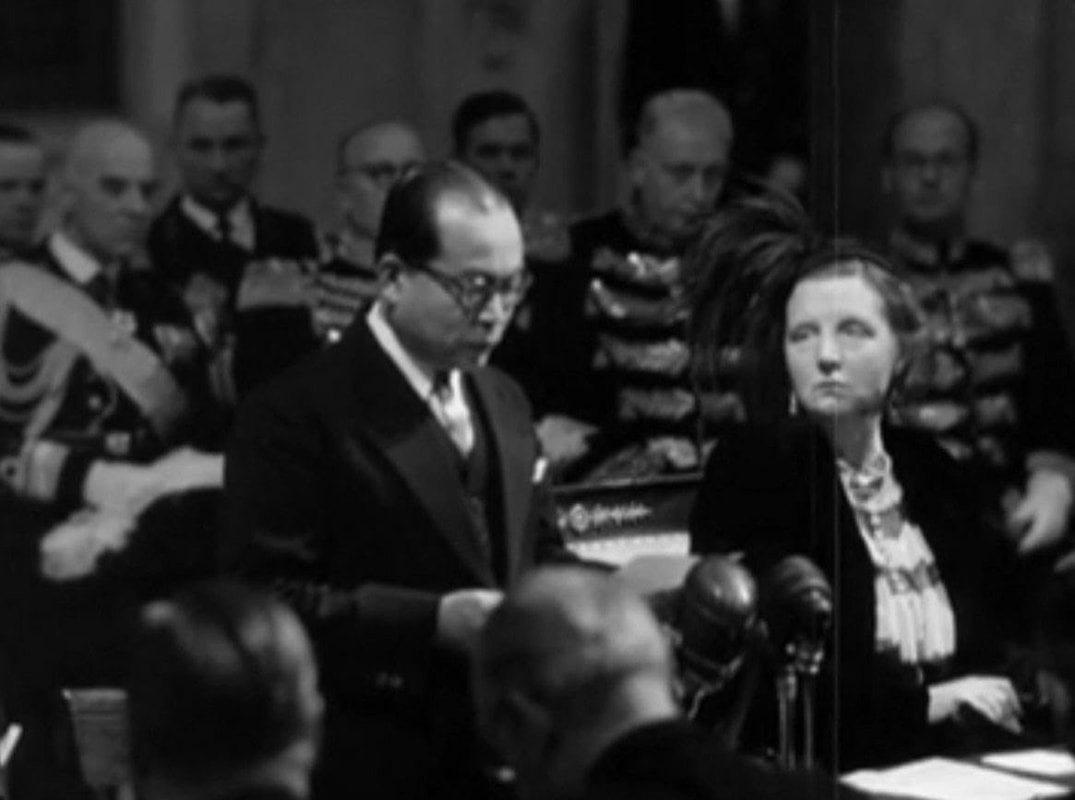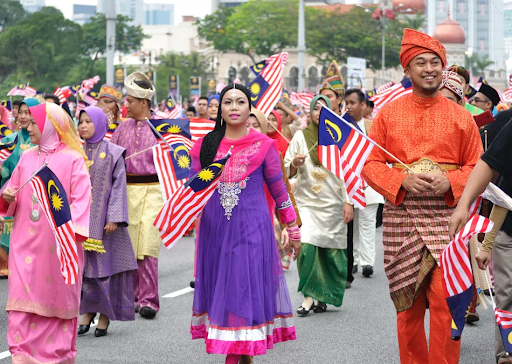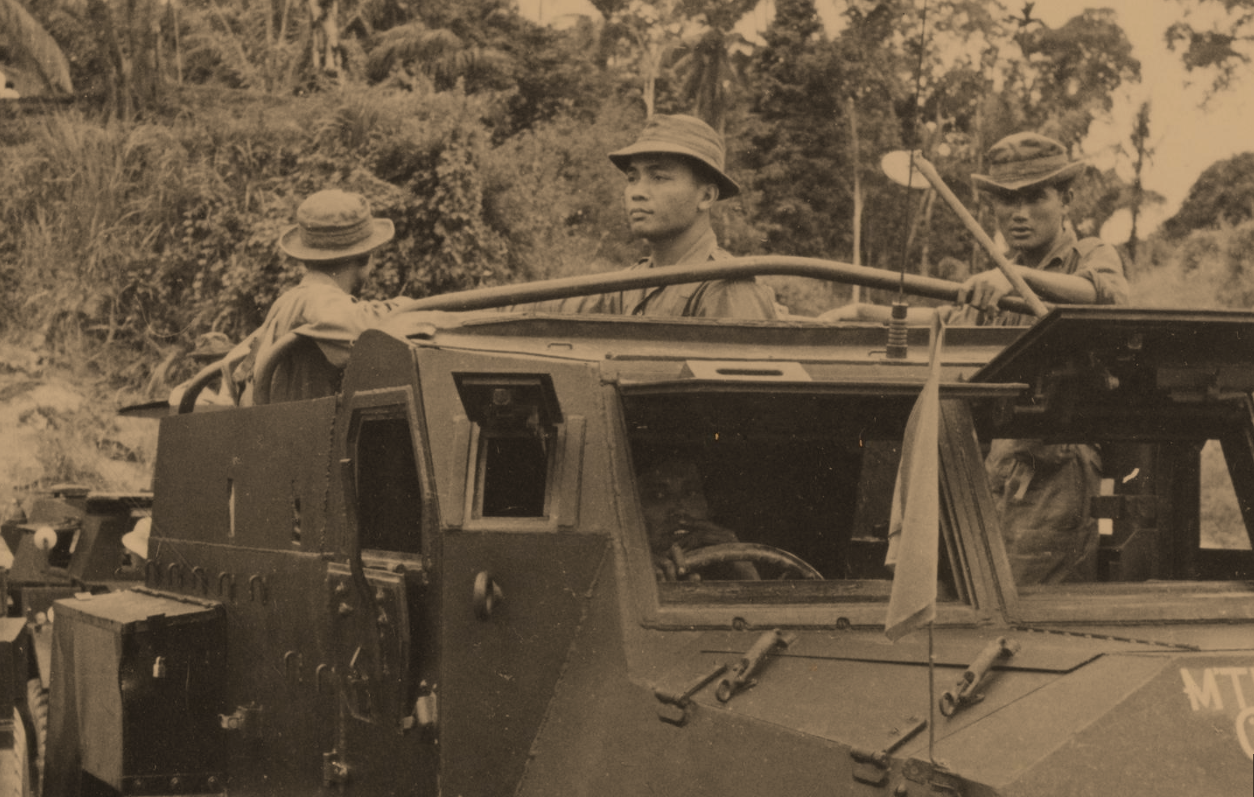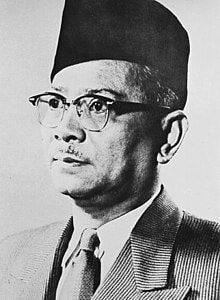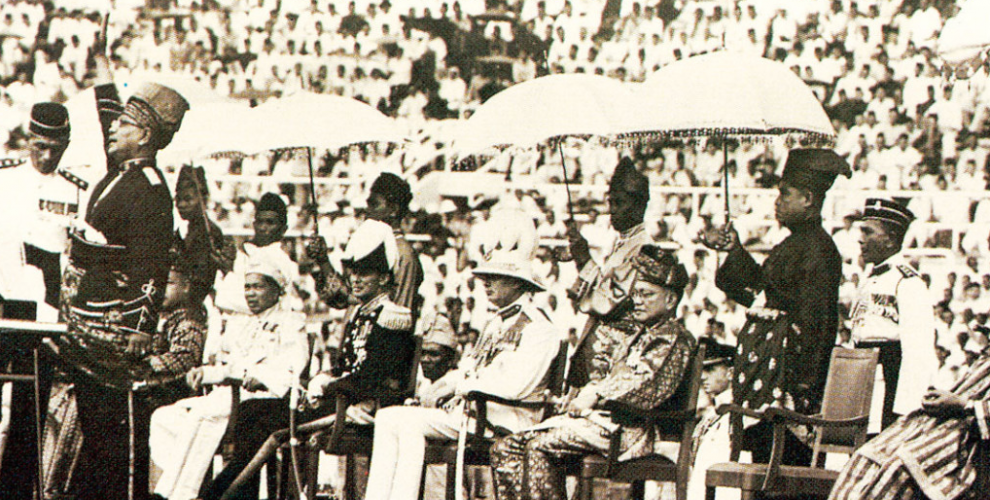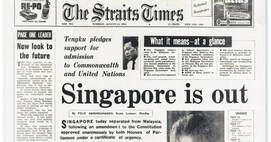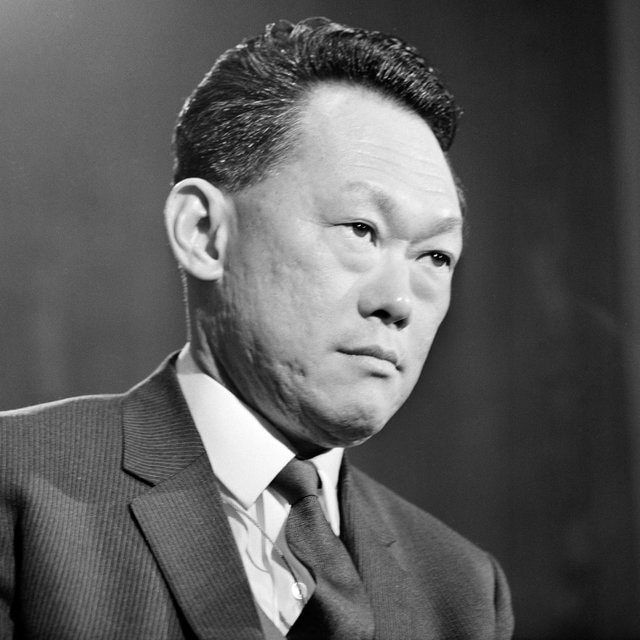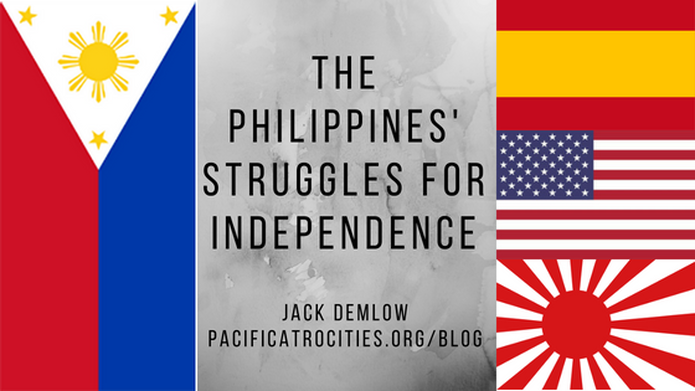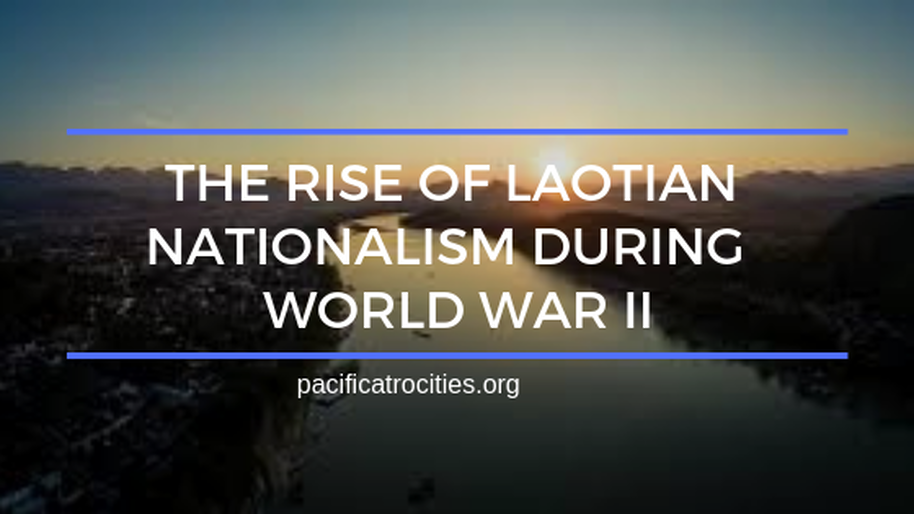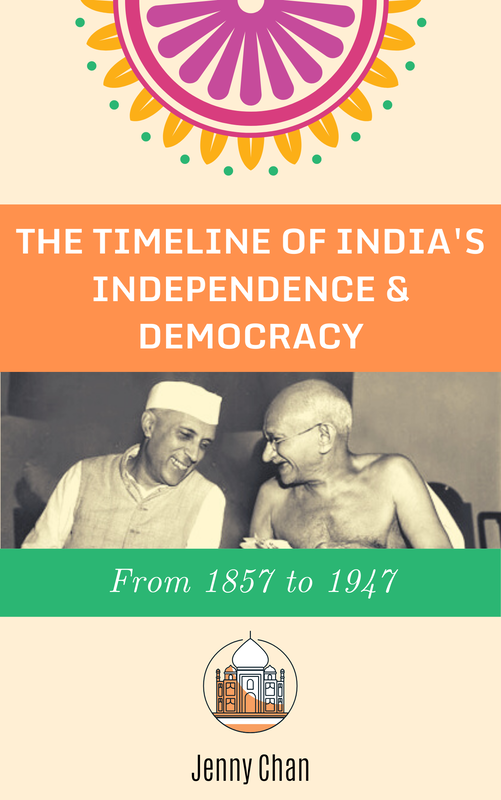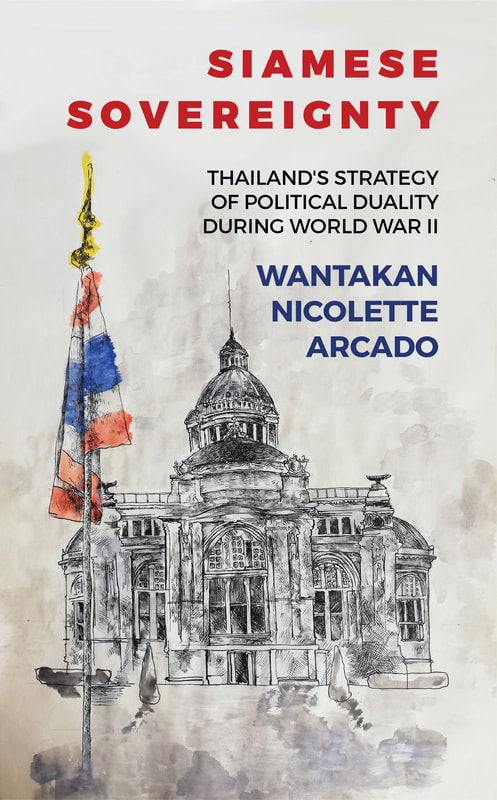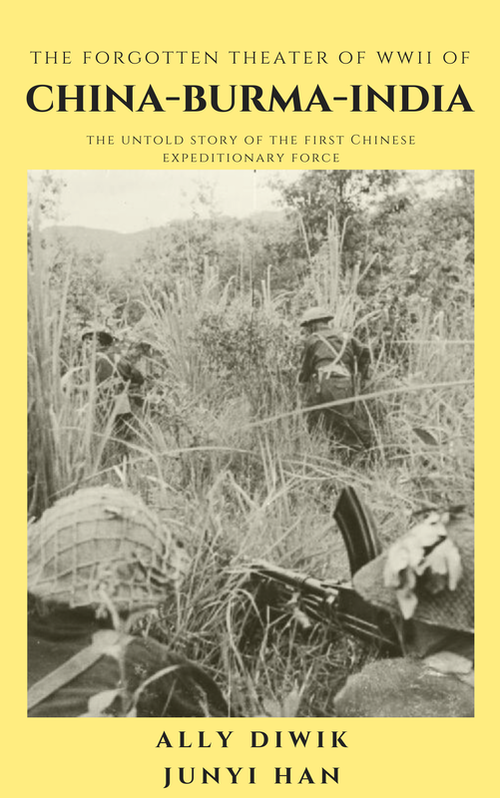|
by Nickii Wantakan Arcado
While independence movements were established well before the beginning of World War II, the conclusion of the war itself served as an important catalyst in forcing foreign powers to retreat and grant nation-states their independence. The following is a structured timeline on when Asian states gained their independence and a brief overview of what lead to their freedom.
May-September 1945
World War II Ends with the unconditional surrender of the Axis Powers. After being notified of Hitler’s death, the Axis powers surrendered on May 7th with General Alfred Jodl representing Germany’s High Command. The day after on May 8th, Winston Churchill announced the end to the war in Europe, coining it VE (or Victory in Europe) day. VE day continues to be celebrated by many European countries. On September 2nd, Japan formally surrendered aboard the USS Missouri in the Tokyo Bay under the jurisdiction of General Douglas MacArthur.
June 1947
The Indian Independence Act (also known as the Mountbatten Plan) was signed on June 15, 1947, dividing the region of India into two seperate states; India and Pakistan. The decree called for full independence by August 15.
When reflecting on Indian independence, one must first look 1857’s Sepoy Mutiny which planted the seeds of rebellion. At the time, India was ruled by the British East India Company, an English commercial, joint-stock imperial enterprise. Indian infantrymen (called Sepoys), broke loyalties with the company and formed a rebellion in the town of Meerut (40 miles from Old Delhi) on May 10, 1987. They argued that the company imposed onto the country social reforms that did not reflect their country’s cultural and historical essence and that harsh land taxes were benefiting princes and Western colonial powers. The rebellion spread throughout various regions, encouraging the emergence of other mutinies and protest against British rule. While British forces succeeded in suppressing the revolt, the rebellion ended the British East India Company’s rule, formally dissolving the corporation in 1848 and transferring ruling powers to the British Crown.
Another important proponent of Indian Independence was the civil disobedience movement led by activist Mahatma Gandhi. One particular act of civil disobedience was the Salt March. On May 12, 1930, Gandhi began his defiant march to the Arabian sea to protest the British Crown’s monopolization of salt. The British salt act banned Indians from harvesting salt, forcing them to purchase the mineral from Britain. This monopoly over salt also included heavy sales taxes, greatly affecting the purchasing power of poor communities. Gandhi’s nonviolent march to break the British law created the satyagraha--a mass civil disobedience campaign. Gandhi’s various acts of protest, as well as the policy work of other Indian government officials, lead to India’s independence in 1947. Unfortunately, less than six months later, Gandhi’s life was taken by a Hindu extremist.
January 1948
Independence is granted to Burma. Burma’s colonization by the British was the result of a series of unfortunate events. During the 18th century, Burma expansionism mostly focused on areas occupied by Chinese forces. In 1824, however, Maha Bandula decided to organize Burmese forces to conquer Assam, a kingdom in the Brahmaputra Valley within India. This lead to the informal introduction of Burma to the British Empire. Between the years 1824 and 1826, Burmese and English forces fought in a series of three wars. The first Anglo-Burmese War was fought for control over Northeastern India. By the third Anglo-Burmese war 1885, Burmese forces lost exponentially to the British, leading to the total annexation of the country. Burma to the British now served as a market for rice exports and a trade medium between the Crown and China. By 1886, Burma became a province of British India. While there were hints of the uprising against British forces leading up to 1890, British forces launched anti-guerilla campaigns, destroyed towns containing rebellion groups, and employed divide-and-rule tactics to pit ethnic groups against one another.
World War II served as the perfect backdrop for the slow separation of Burma from India, and eventually the British. Radical activist Aung San (father of Aung San Suu Kyi) co-founded the Communist Party of Burma, drawing inspiration from Marxism and the Sinn Fein movement in Ireland. While his group sought support from the Chinese during the war, it was Japanese forces that extended their military assistance for a national uprising and Burmese independence. Unfortunately, in 1942, Japanese forces invaded Burma. Aung San quickly switched loyalties and negotiated with British forces to drive out Imperial Japan. By May 1945, Japanese forces were expelled.
While there were calls for Aung San’s imprisonment due to his initial collaboration with the Chinese and Japanese, the British recognized Aung San’s popularity and by 1947, Aung San was successful in negotiating Burma’s independence. Aung San’s party, the Anti-Fascist People’s Freedom League (AFPFL) won 248 out of 255 assembly seats in the elected interim government. This victory was short-lived, in July 1947, Aung San and members of his cabinet were gunned down by under the instructions of an opposition politician. Aung San’s prodigy, U Nu, took his place, becoming the first Prime Minister of Burma. By January 1948, Burma finally obtained its independence.
December 1949 also argued as August 1945
Although not recognized by the United Nations until December of 1949, the official Proclamation of Indonesian Independence was read on August 17, 1945 by Sukarno (Kusno Sosrodihardjo), one the the main leaders who fought in various battles for Indonesian independence from the Netherlands. This declaration marked the beginning of the Indonesian National Revolution, a series of diplomatic battle and physical resistance against the Netherlands and a response against 350 years of Dutch rule. The proclamation reads the following:
PROCLAMATION
WE THE PEOPLE OF INDONESIA HEREBY DECLARE THE INDEPENDENCE OF INDONESIA. MATTERS WHICH CONCERN THE TRANSFER OF POWER AND OTHER THINGS WILL BE EXECUTED BY CAREFUL MEANS AND IN THE SHORTEST POSSIBLE TIME. DJAKARTA, 17 AUGUST 1945 IN THE NAME OF THE PEOPLE OF INDONESIA SOEKARNO/HATTA* *Proclamation published by the Ministry of Foreign Affairs in 1948
By November 1949, after five years of military hostilities between Indonesian and Dutch forces, an agreement was reached with mediation from the British and the United Nations Security Council. Complete and unconditional sovereignty was granted to the nation on December 27, 1949. While August 1945 is recognized by Indonesians as its date of independence, the United Nation and Netherlands recognizes 1949 as the official date as per the Dutch-Indonesian Round Table Conference held in The Hague, Netherlands under the observance of various parties including the United States, China, Belgium, and the U.N.
August 1957
The Federation of Malaya obtained Independence from the British Empire on August 31, 1957. Known as Hari Merdeka (Independence Day) or Hari Kebangsaan (National Day), the national holiday is celebrated with fireworks, flag-waving, sporting events, and parades all throughout Malaysia.
Malaysian independence was spearheaded by Tunku Abdul Rahman, Malaysia’s first Prime Minister after the vents of the Malayan Emergency from 1948-1960. The Malayan emergency can be traced back to economic issues created under British colonialism. Prior to colonialism, the Malayan economy relied on tin and rubber exports. With the introduction of the British, taxes imposed on these goods greatly affected local industries, heightening the poverty levels in the country. Poverty levels in Malaya further increased with the Japanese occupation of Malaya in 1941, as trade became limited and Malayans were only allowed to export to Japanese forces. A severe famine broke out in 1942 and Japanese forces took over Singapore shortly after. In addition, the country was also experiencing a communist revolt lead by the Malayan National Liberation Army (MNLA) - the armed wing of the Malayan Communist Party (MCP).
In response, the British declared a state of emergency, imposed curfews, and created the Federation of Malaya in 1948. Fighting was ongoing until the 1950s, and by 1955, it was agreed that Malaya’s independence was the key to dissolving communist forces and Chinese influence. An election was held and the United Malay National Organization, Tunku Abdul’s party, won a majority of the seats, through tactics of running Malay candidates in Malay dominated areas, Chinese candidates and Chinese dominated areas and so forth. The official declaration of independence was read on August 31, 1957, in the Stadium Merdeka in Kuala Lumpur under the attendance of more than 20,000 people as well as the King and Queen of Thailand.
When the federation was granted independence in August 1957, the insurrection also dissolved and Tunku Abdul Rahman became Malaya’s Prime Minister. The federation was then renamed ‘Malaysia’ in 1963, and by 1965 Singapore sought its own independence from the federation under the leadership of Lee Kuan Yew.
References:
Related ArticlesRelated Books
0 Comments
Leave a Reply. |
- Home
- Stories
-
Internship
- Summer 2024 Internship
- Summer 2023 Internship
- Fall 2022 Internship
- Summer 2022 Internship
- Summer 2021 Internship
- Fall 2020- Spring 2021 Internship
- Summer 2020 Internship
- Fall 2019 Internship
- Summer 2019 Internship >
- School Year 2018-2019 Internship
- Summer 2018 Internship >
- Fall 2017 Internship
- Summer 2017 Internship >
- Books
- Archives
-
Resource Page
-
Supplementary Research Guides
>
- Unit 731 - Guide >
-
Philippines' Resistance - Guide
>
- Philippines World War II Timeline
- The Japanese Invasion & Conquest of the Philippines
- Bataan Death March
- Formation of Underground Philippines Resistance
- Supplies of the Guerrilla Fighters
- The Hukbalahap
- Hunter's ROTC
- Marking's Guerrillas
- United States Army Forces in the Philippines of Northern Luzon (USAFIP-NL)
- The Aetas
- Chinese and Filipino-Chinese Nationalist Guerrilla Units
- The Female Faces of the Philippine Guerrillas
- Rising Sun Flag - Guide >
- Pinay Guerrilleras - Guide >
- Fall of Singapore - Guide >
- Three Years and Eight Months - Guide >
- Siamese Sovereignty - Guide >
- The Khabarovsk War Crimes Trial - Guide >
- Unit 731 Cover-up : The Operation Paperclip of the East - Guide >
- Marutas of Unit 731 - Guide >
- Prince Konoe Memoir - Guide >
- Competing Empires in Burma - Guide >
- Battle of Shanghai - Guide >
- Ishi Shiro - Guide >
- Taiwan The Israel of the East - Guide >
- Seeking Justice for Biological Warfare Victims of Unit 731 - Guide >
- Rice and Revolution - Guide >
- Clash of Empires - Guide >
-
Hunger for Power and Self-SufficiencyI - Guide
>
- The Influence of War Rations on Post-War Culinary Transformations
- How World War II Complicated Food Scarcity and Invention
- American Military Innovations
- Government-Sponsored Food Inventions in Europe during World War II
- Feeding the Army: The Adaptation of Japanese Military Cuisine and Its Impact on the Philippines
- Mixed Dishes: Culinary Innovations Driven by Necessity and Food Scarcity
-
Denial A Quick Look of History of Comfort Women and Present Days’ Complication - Guide
>
- The Comfort Women System and the Fight for Recognition
- The Role of Activism and International Pressure
- The Controversy over Japanese History Textbooks
- The Sonyŏsang Statue and the Symbolism of Public Memorials
- Activism and Support from Japanese Citizens
- The Future of Comfort Women Memorials and Education
- Echoes of Empire: The Power of Japanese Propaganda - Guide >
- Lesson Plans >
-
Supplementary Research Guides
>
|
Pacific Atrocities Education
730 Commercial Street San Francisco, CA 94108 415-988-9889 |
Copyright © 2021 Pacific Atrocities Education.
We are a registered 501 (c)(3) charity. |
- Home
- Stories
-
Internship
- Summer 2024 Internship
- Summer 2023 Internship
- Fall 2022 Internship
- Summer 2022 Internship
- Summer 2021 Internship
- Fall 2020- Spring 2021 Internship
- Summer 2020 Internship
- Fall 2019 Internship
- Summer 2019 Internship >
- School Year 2018-2019 Internship
- Summer 2018 Internship >
- Fall 2017 Internship
- Summer 2017 Internship >
- Books
- Archives
-
Resource Page
-
Supplementary Research Guides
>
- Unit 731 - Guide >
-
Philippines' Resistance - Guide
>
- Philippines World War II Timeline
- The Japanese Invasion & Conquest of the Philippines
- Bataan Death March
- Formation of Underground Philippines Resistance
- Supplies of the Guerrilla Fighters
- The Hukbalahap
- Hunter's ROTC
- Marking's Guerrillas
- United States Army Forces in the Philippines of Northern Luzon (USAFIP-NL)
- The Aetas
- Chinese and Filipino-Chinese Nationalist Guerrilla Units
- The Female Faces of the Philippine Guerrillas
- Rising Sun Flag - Guide >
- Pinay Guerrilleras - Guide >
- Fall of Singapore - Guide >
- Three Years and Eight Months - Guide >
- Siamese Sovereignty - Guide >
- The Khabarovsk War Crimes Trial - Guide >
- Unit 731 Cover-up : The Operation Paperclip of the East - Guide >
- Marutas of Unit 731 - Guide >
- Prince Konoe Memoir - Guide >
- Competing Empires in Burma - Guide >
- Battle of Shanghai - Guide >
- Ishi Shiro - Guide >
- Taiwan The Israel of the East - Guide >
- Seeking Justice for Biological Warfare Victims of Unit 731 - Guide >
- Rice and Revolution - Guide >
- Clash of Empires - Guide >
-
Hunger for Power and Self-SufficiencyI - Guide
>
- The Influence of War Rations on Post-War Culinary Transformations
- How World War II Complicated Food Scarcity and Invention
- American Military Innovations
- Government-Sponsored Food Inventions in Europe during World War II
- Feeding the Army: The Adaptation of Japanese Military Cuisine and Its Impact on the Philippines
- Mixed Dishes: Culinary Innovations Driven by Necessity and Food Scarcity
-
Denial A Quick Look of History of Comfort Women and Present Days’ Complication - Guide
>
- The Comfort Women System and the Fight for Recognition
- The Role of Activism and International Pressure
- The Controversy over Japanese History Textbooks
- The Sonyŏsang Statue and the Symbolism of Public Memorials
- Activism and Support from Japanese Citizens
- The Future of Comfort Women Memorials and Education
- Echoes of Empire: The Power of Japanese Propaganda - Guide >
- Lesson Plans >
-
Supplementary Research Guides
>
